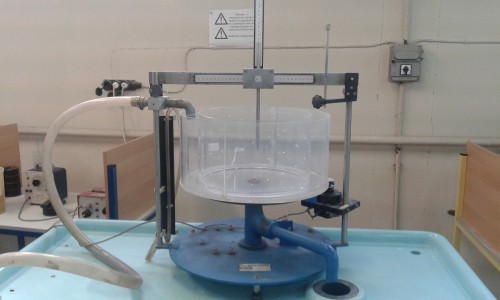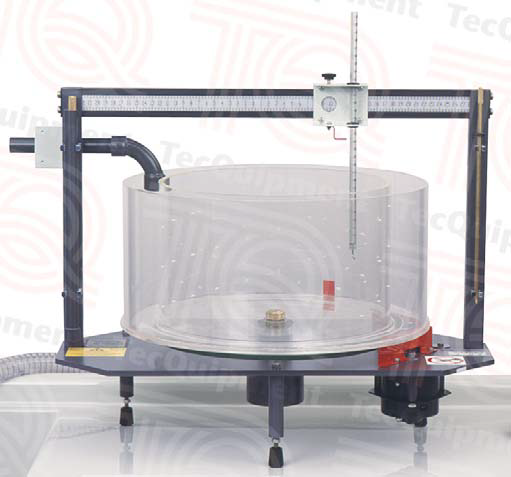
Use in Fluid Dynamics II lab.
The Vortex Apparatus enables students to produce both free and forced vortices, and measure the vortex water surface profile.
The equipment consists of a transparent vessel on a support frame, which mounts on a hydraulic bench. If no hydraulic bench is available, an external water supply and drain are required.
A low-voltage, variable-speed motor rotates the vessel about its vertical axis. A speed-control unit, sited away from the main apparatus, controls the speed of rotation.
To produce a forced vortex, students add water to the rotating vessel until it is about half full. A forced vortex forms. After a few minutes the vortex becomes constant, and students can measure the surface profile using the traverse probe. The traverse probe can move both horizontally and vertically, and both axes have linear scales. Students can also measure distribution of total head by replacing the traverse probe with a Pitot tube.
To produce a free vortex, students place a smaller, perforated transparent cylinder inside the main vessel. This forms an annulus into which a continuous water supply is directed. When the vessel rotates, water passes through the perforations and spirals slowly inwards to a small hole in the centre of the base of the vessel. The surface falls rapidly towards the centre and produces an air core. Students measure the surface profile using the traverse probe.

